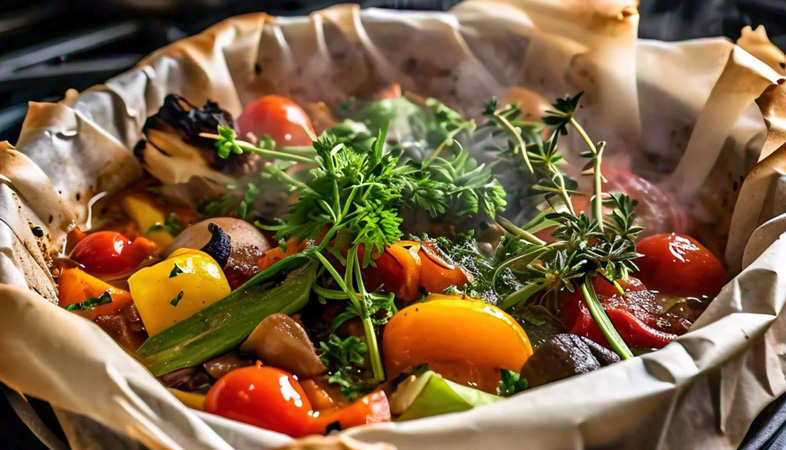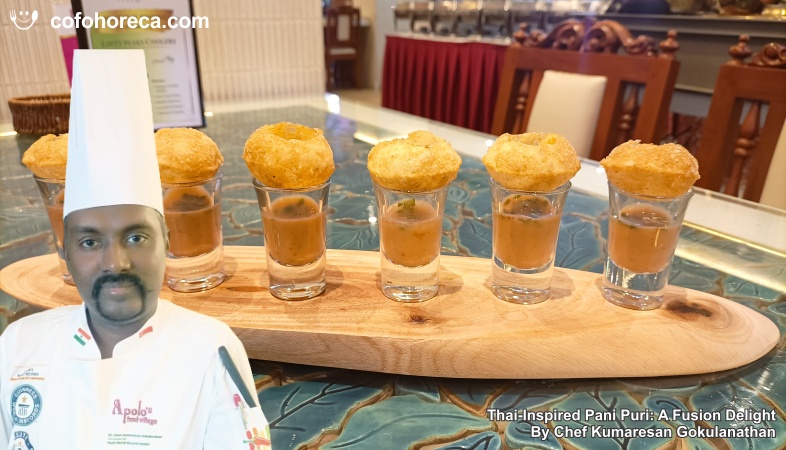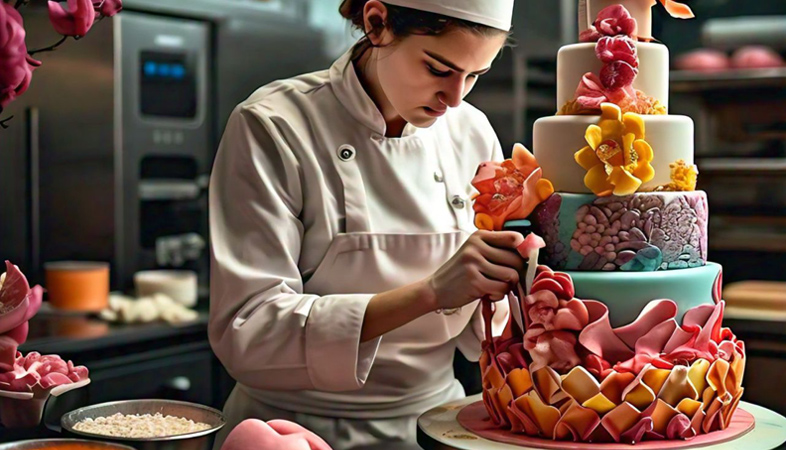Cooking in Parchment: The French Technique That Steams Flavors to Perfection
Cooking in parchment paper is a French culinary technique that excels in delivering flavorful and tender dishes through gentle steaming.
Cooking in parchment paper, or en papillote, is a classic
French technique that combines simplicity with elegance to create dishes that
are flavorful and tender. This method, which involves sealing ingredients in a
parchment paper packet, utilizes steam to cook the food, preserving its natural
flavors and moisture. Here’s a deeper look into the art of cooking in parchment
and how it can elevate your culinary creations.
The technique of cooking in parchment paper has its roots in French cuisine, where it is used to prepare a variety of dishes, from fish and seafood to poultry and vegetables. The process begins by placing the ingredients—such as a piece of fish, a selection of vegetables, or even a small portion of meat—on a large sheet of parchment paper. Aromatics, herbs, and a splash of liquid, like wine or broth, are often added to enhance the flavor.
Once the ingredients are in place, the parchment paper is folded and crimped to create a sealed packet. This packet is then baked in the oven. As the food cooks, the moisture from the ingredients turns into steam, which circulates within the packet, gently cooking the contents. The result is a dish that is incredibly moist, tender, and infused with the flavors of the accompanying herbs and seasonings.
One of the significant advantages of cooking in parchment paper is the way it preserves the natural flavors of the ingredients. Because the packet is sealed, the food essentially steams in its own juices, which helps concentrate and intensify the flavors. Additionally, the cooking environment within the packet is gentle, reducing the risk of overcooking and ensuring that delicate ingredients, like fish, remain tender and flaky.
Another benefit of this technique is its versatility. The en papillote method can be adapted to a wide range of ingredients and flavor profiles. For example, you can prepare a classic fish dish with lemon, dill, and white wine, or create a vegetarian meal with seasonal vegetables, garlic, and a drizzle of balsamic vinegar. The technique works well for various types of proteins and vegetables, making it a great option for diverse menus.
The presentation of dishes cooked in parchment paper is also visually appealing. When the packet is opened at the table, the steam and aromas are released, creating an impressive and aromatic experience for the diner. This dramatic reveal adds an element of excitement to the meal and enhances the overall dining experience.
Cooking in parchment paper is not only about flavor but also about convenience. The technique is relatively hands-off once the packets are assembled, allowing for easy preparation and cleanup. Since each portion is cooked individually in its own packet, it simplifies serving and ensures that every guest receives a perfectly cooked meal.
For those looking to try this technique, it’s essential to use parchment paper rather than wax paper, as wax paper is not heat-resistant and can cause undesirable results. Additionally, ensure that the packets are sealed tightly to prevent any steam from escaping, which is crucial for achieving the desired cooking effect.
Cooking in parchment paper is a French culinary technique that excels in delivering flavorful and tender dishes through gentle steaming. By sealing ingredients in parchment, you create a cooking environment that preserves moisture, intensifies flavors, and simplifies preparation and cleanup. Whether you’re preparing a simple weeknight dinner or an elegant dinner party dish, this technique offers a delicious and visually striking way to enjoy a variety of ingredients at their best.
.png)









.jpg)


















